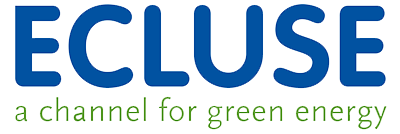Construction ECLUSE-Tunnel commences
Energy recovery today
Today, the energy from the waste-to-energy facilities in Doel is already largely valorized. During the incineration of waste, the hot flue gases are used to generate steam in a boiler. This steam is then delivered directly via ECLUSE to five neighboring companies in the Waaslandhaven. They utilize the supplied heat directly in their chemical processes and tap into the steam network as needed. The steam that is not drawn upon is converted into electricity via a turbine. By connecting Evonik to this steam network as well, the proportion of heat that is directly utilized increases. This yields a significantly higher energy efficiency compared to converting it into electricity.
Additional reduction of 100,000 to 150,000 tons of CO2 emissions
At its location near the Tijsmanstunnel in Antwerp, Evonik currently has a significant need for steam, which is met by burning natural gas. By connecting to ECLUSE, Evonik can significantly reduce this fossil fuel consumption. The amount of natural gas saved as a result is equivalent to the annual consumption of over 38,000 households. Transitioning to steam from ECLUSE will also lead to avoiding annual emissions of 100,000 to 150,000 tons of CO2. Approximately half of the waste processed in Doel is of biogenic origin. Therefore, 50% of the produced steam is considered green heat.
Tunnel as a necessary connection for a sustainable industrial cluster
The waste-to-energy site on the left bank of the Scheldt aims to maximize the use of steam produced during waste processing for heat applications. Evonik, located on the right bank of the Scheldt, has a significant demand for steam. Connecting these two entities enables the sustainability of energy supply within an industrial symbiosis. To realize this connection, ECLUSE is constructing this Scheldt tunnel.
Future
After Evonik, other companies on the right bank can also connect to the steam network.
In addition to the ECLUSE 2 steam pipeline, the tunnel will accommodate additional pipelines. There is a clear need for additional pipeline passage capacity under the Scheldt. The ECLUSE 2 tunnel addresses this need and thereby facilitates opportunities for growth in the Antwerp industrial cluster. In the future, further cascading of heat can also be explored.
Society wins on many fronts
The benefits of ECLUSE2 for people and society are huge:
-
Less fossil fuels, more renewable energy.
Companies that connect to ECLUSE2 can save significantly on fossil fuels by turning off their own steam-producing facilities. The steam they use from ECLUSE is 50% green and does not require fossil fuels.
-
Less CO2 emissions
With the connection of Evonik, a yearly saving of at least 100,000 tons of CO2 emissions will be achieved by shutting down existing gas-fired facilities. When ECLUSE2's full capacity is utilized, the CO2 savings could reach at least 150,000 tons per year.
-
Reduced nitrogen emissions
The transition to ECLUSE steam significantly contributes to reducing nitrogen emissions: by limiting the use of fossil fuels, Evonik can decrease nitrogen emissions for its energy supply by up to 200 tons of NOx per year. This represents a reduction of 75%.
-
Meeting energy and climate goals
ECLUSE2 will make a significant contribution to meeting the goals of the National Energy and Climate Plan for the period 2020 and 2030.
-
In terms of growth of heat networks: ECLUSE2 can meet 10 to 24% of the target.
-
In terms of growth for green heat production: ECLUSE2 can meet 7.5 to 19% of the target.
-
Less energy loss
Less energy is lost in the thermal processing of waste. Direct use of steam has a significantly higher energy efficiency than converting steam to electricity.
